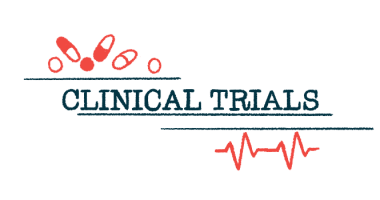Living With Pulmonary Hypertension
Overview
Living with a chronic disease like pulmonary hypertension (PH) can be challenging. It can affect a patient’s ability to accomplish daily tasks, as well as affect their quality of life. In addition to therapies that can help manage the disease, patients can also make some changes to their lifestyle and adopt different strategies that may help them cope with the disease on a day-to-day basis.
Flying
Patients with PH are not prevented from flying, but it is important to be aware of some of the limitations and risks associated with air travel. People with PH may need to make additional arrangements before flying, taking into consideration the effects that altitude and weather can have on the body. Patients should discuss ways to mitigate these risks with their physician prior to flying.
Diet
Diet and nutrition are important for everyone to maintain good health, but people with PH should be particularly aware of how these factors can affect their condition and quality of life. Daily consumption of fruits, vegetables, whole grains, lean meats, poultry, and fish, as well as reducing intake of saturated fat, trans fat, cholesterol, sodium (salt), and added sugar, is important for PH patients.
Disability
Due to the symptoms and severity of the disease, PH and disability are often related, particular in later stages of disease or when not treated. People with PH often experience shortness of breath, fatigue, and/or chest pain, resulting in increased discomfort during physical activity or even in conducting day-to-day tasks. PH is a progressive disease, meaning symptoms worsen over time, which may also lead to disability.
Exercise
Due to the symptoms of PH, exercise may be difficult for patients, but they may benefit from moderate and regular exercise, under the supervision of a doctor. It may help PH patients to stay physically active to strengthen the muscles and maintain endurance as much as possible. They should discuss with their doctor the appropriate type of exercise, as well as duration and difficulty.
Pregnancy
Pregnancy can have a greater impact on patients who have PH, since the heart and circulatory system of pregnant women is in constant stress. Women with PH should be aware of the risks of pregnancy, as well as how it may affect the baby, and discuss these potential issues with their healthcare provider. A multidisciplinary approach is typically recommended.
Smoking
For patients with PH, avoiding smoking is extremely important. When people with PH continue to smoke, the progression of the disease tends to be faster, while the quality of life is decreased. They also are more likely to have exacerbated symptoms, including shortness of breath, fatigue, dizziness or fainting spells, pain or pressure in the chest, swelling in the ankles, legs and abdomen, and irregular heartbeat.
Children
Pediatric PH is similar to idiopathic pulmonary arterial hypertension in adults, which is when the cause is unknown. Children of all ages can be diagnosed with the disease when they reveal a mean pulmonary artery pressure greater than 25 mm Hg at rest with normal pulmonary capillary wedge pressure, in the absence of associated causes of PH.
Complications
There are numerous types of PH complications that can occur, the most common being right-sided heart failure, which is a result of the effort made by the heart to pump blood through blocked pulmonary arteries. Some therapeutic strategies may prevent these complications or delay their onset and progression. In addition to medical treatment, making lifestyle changes and monitoring overall health can be beneficial.






